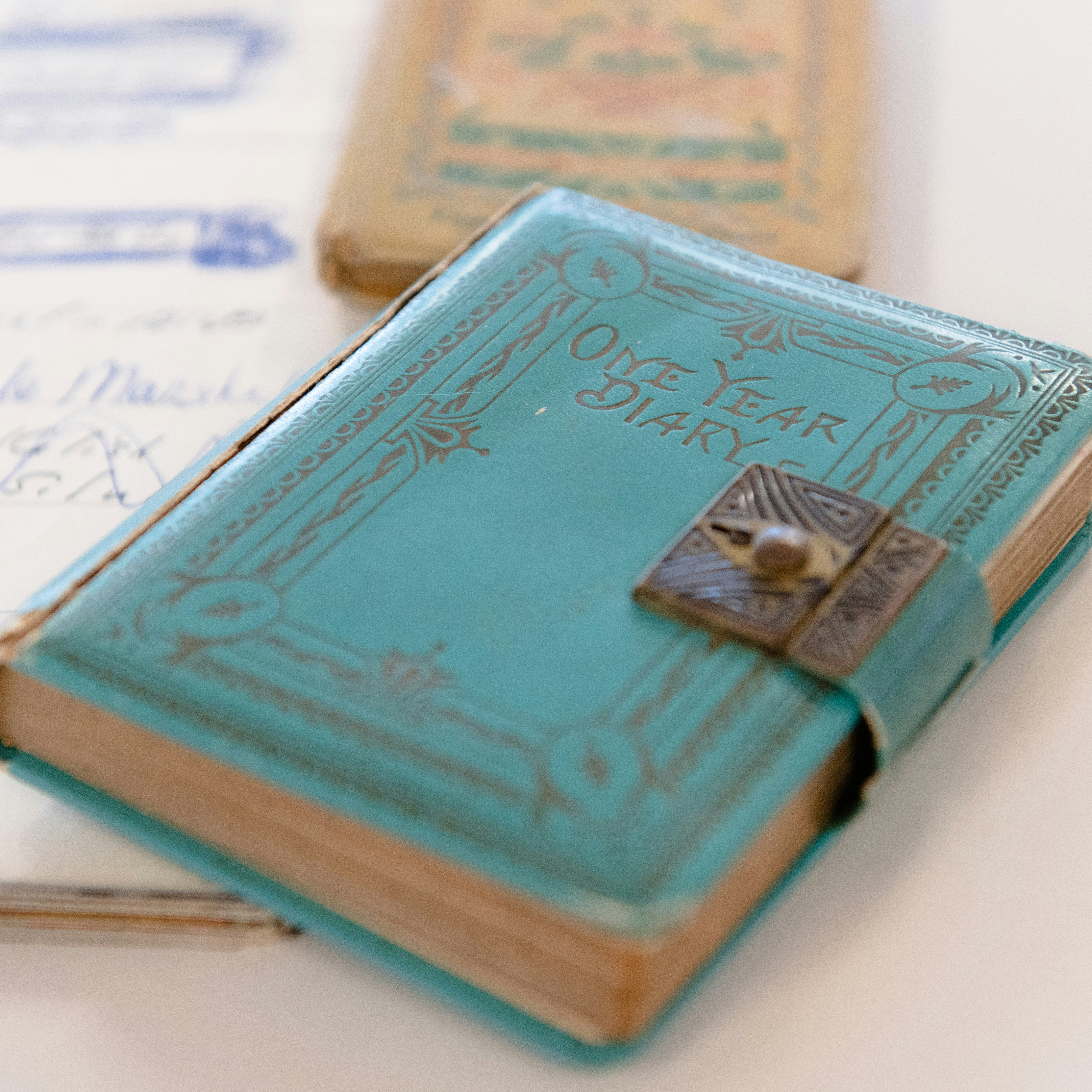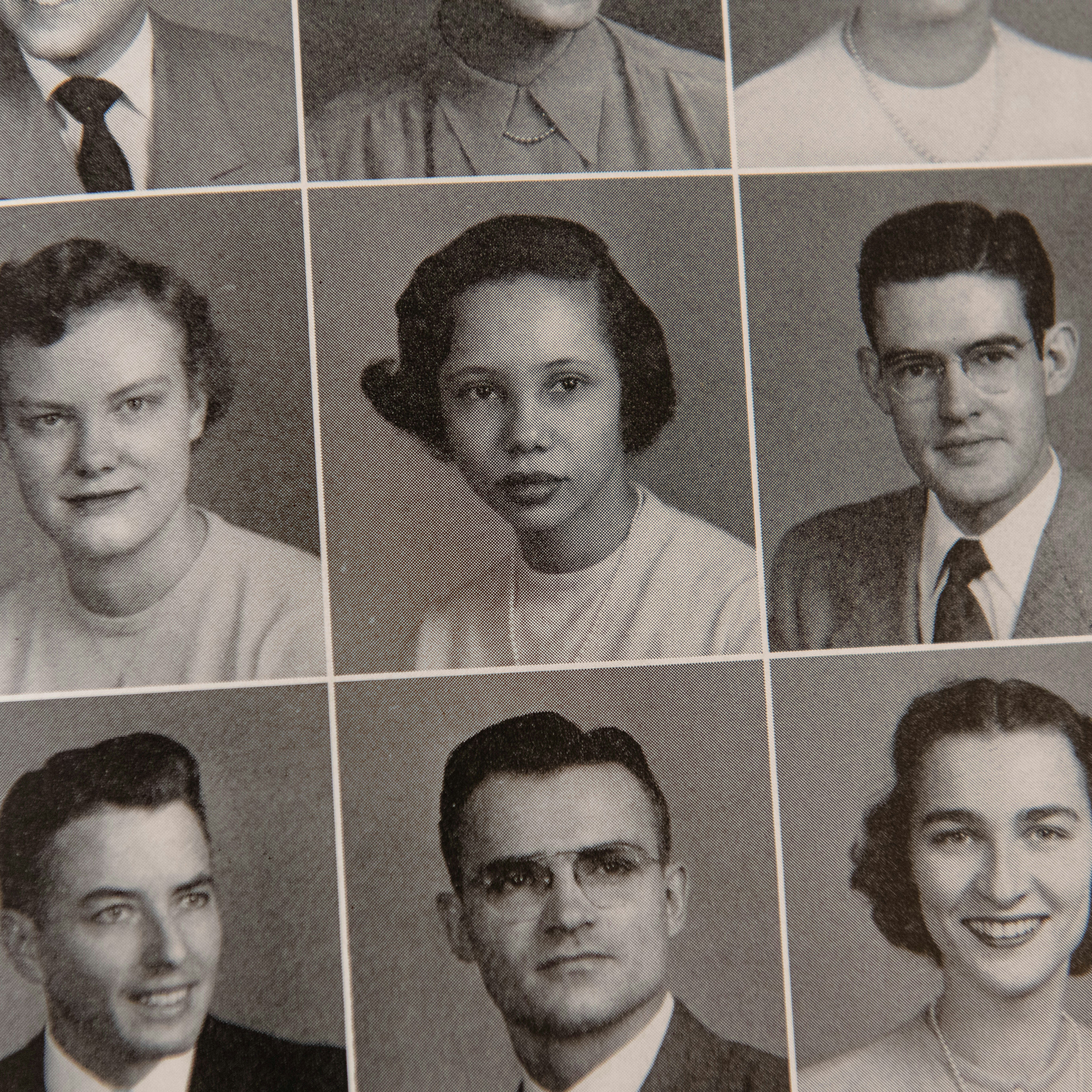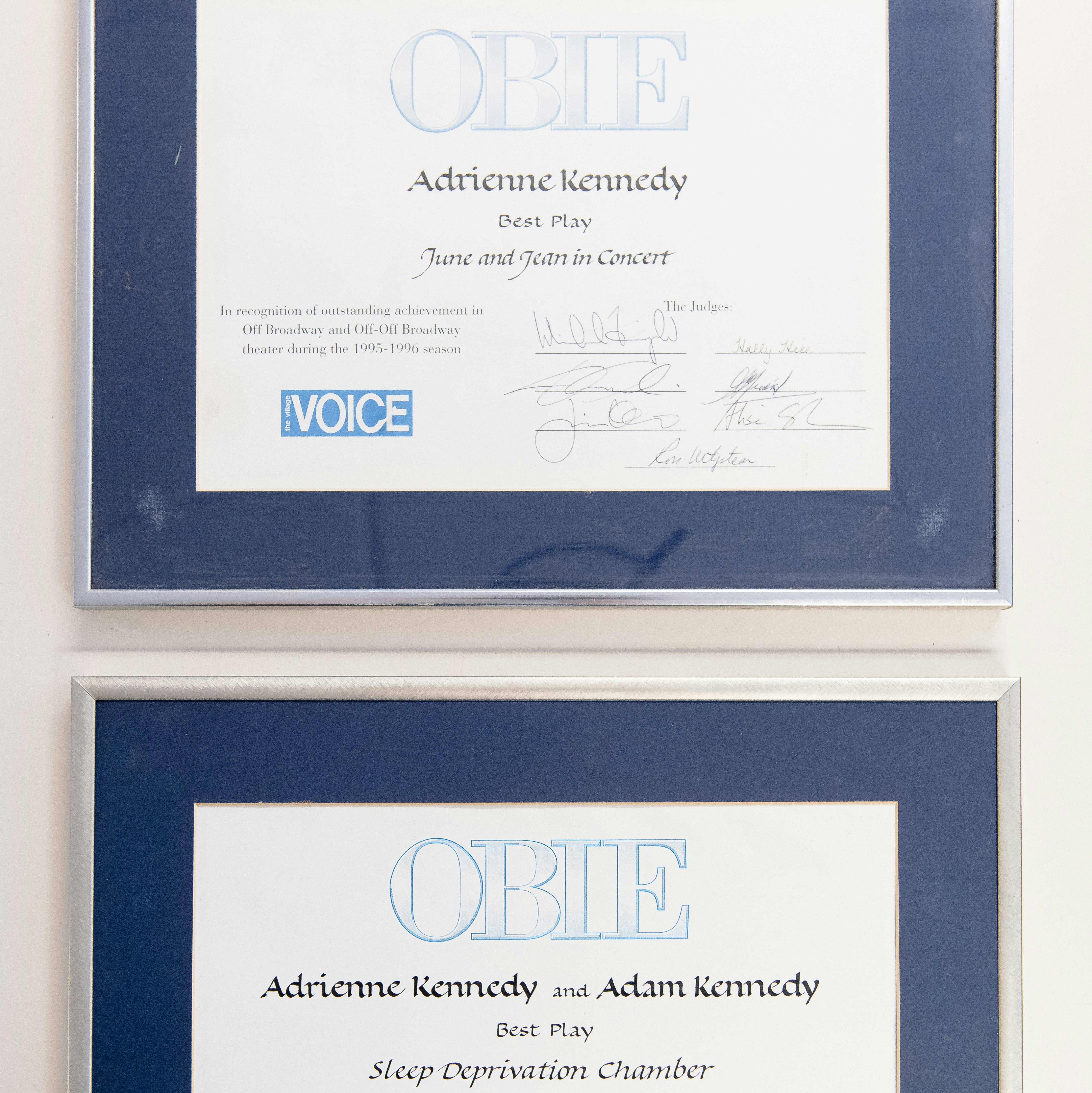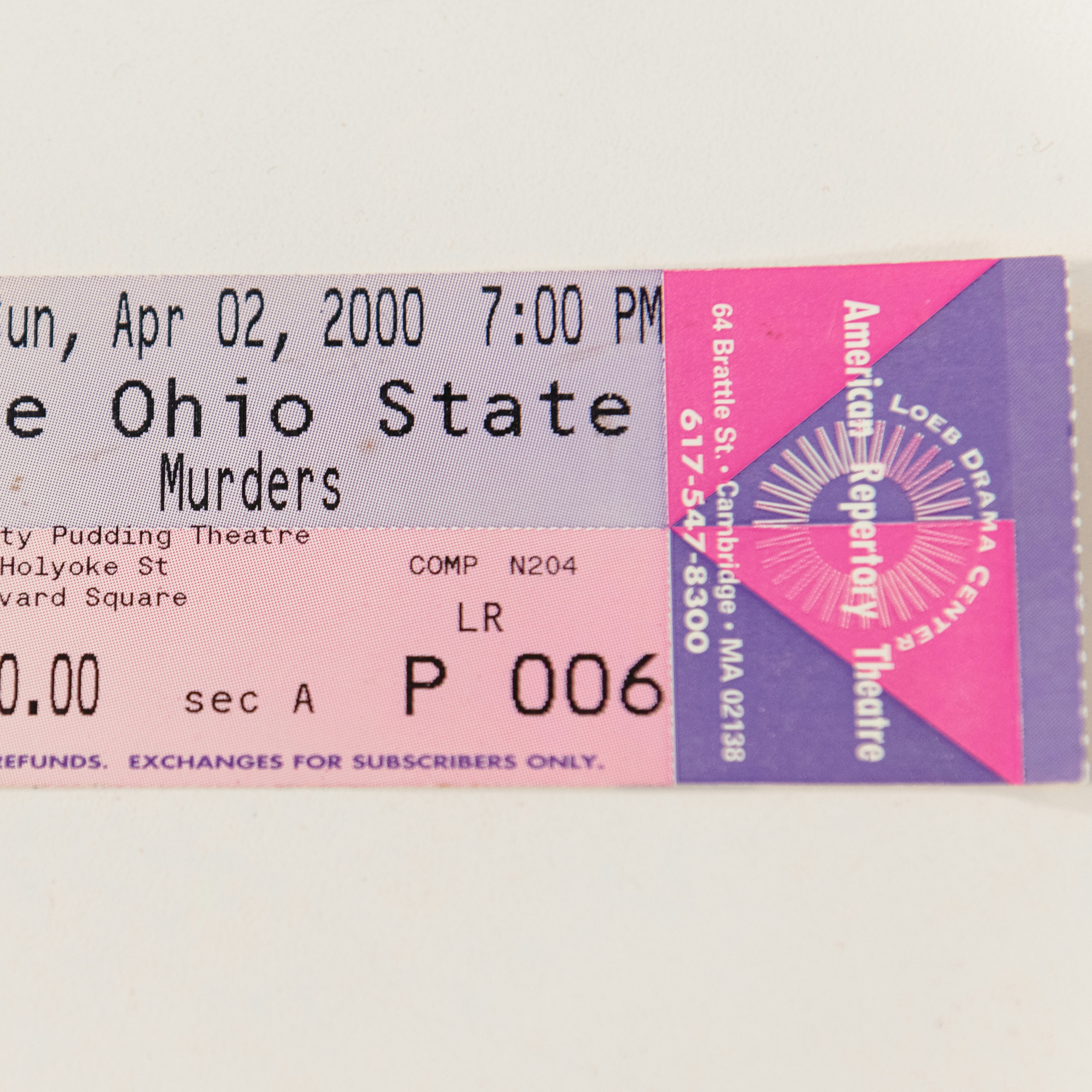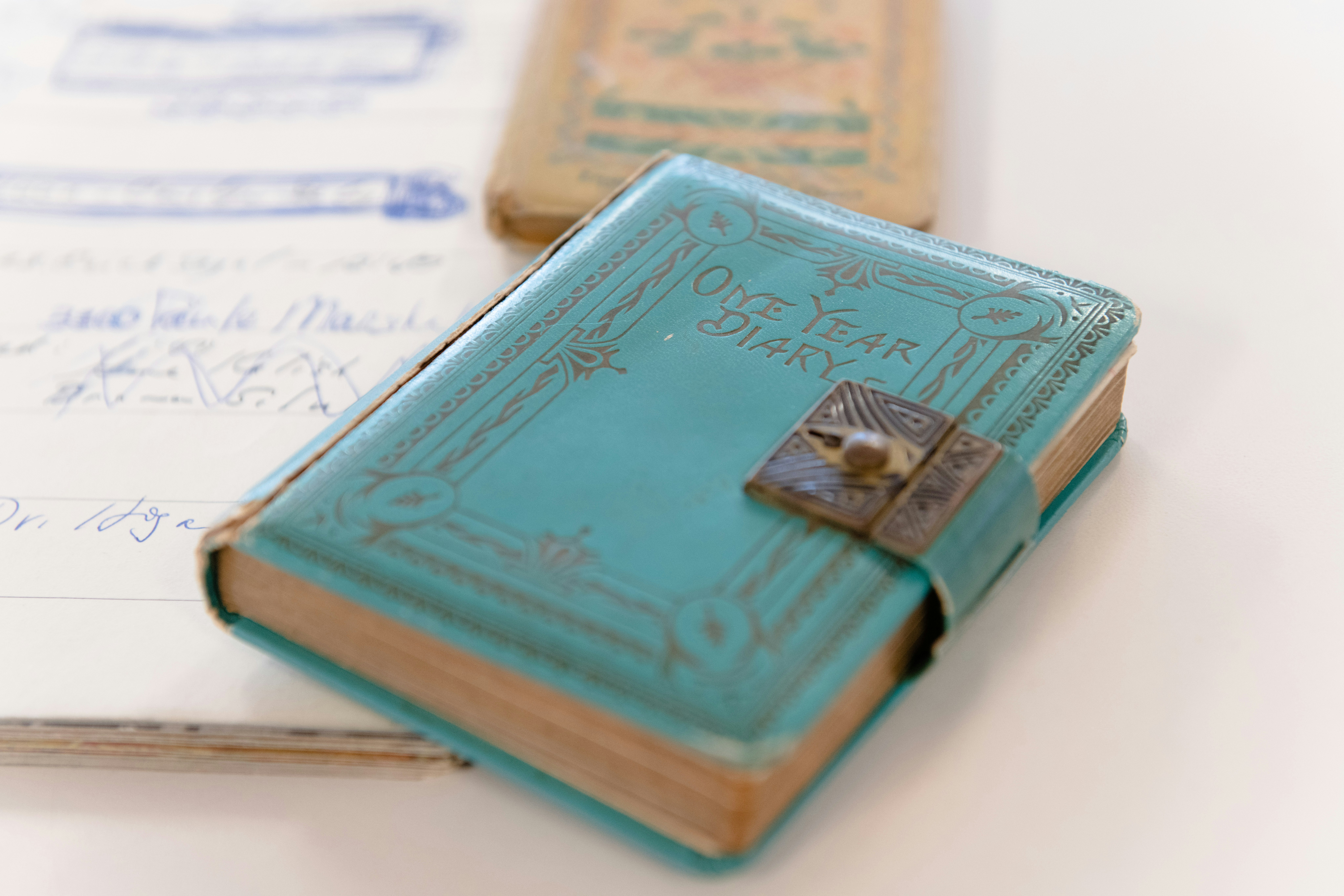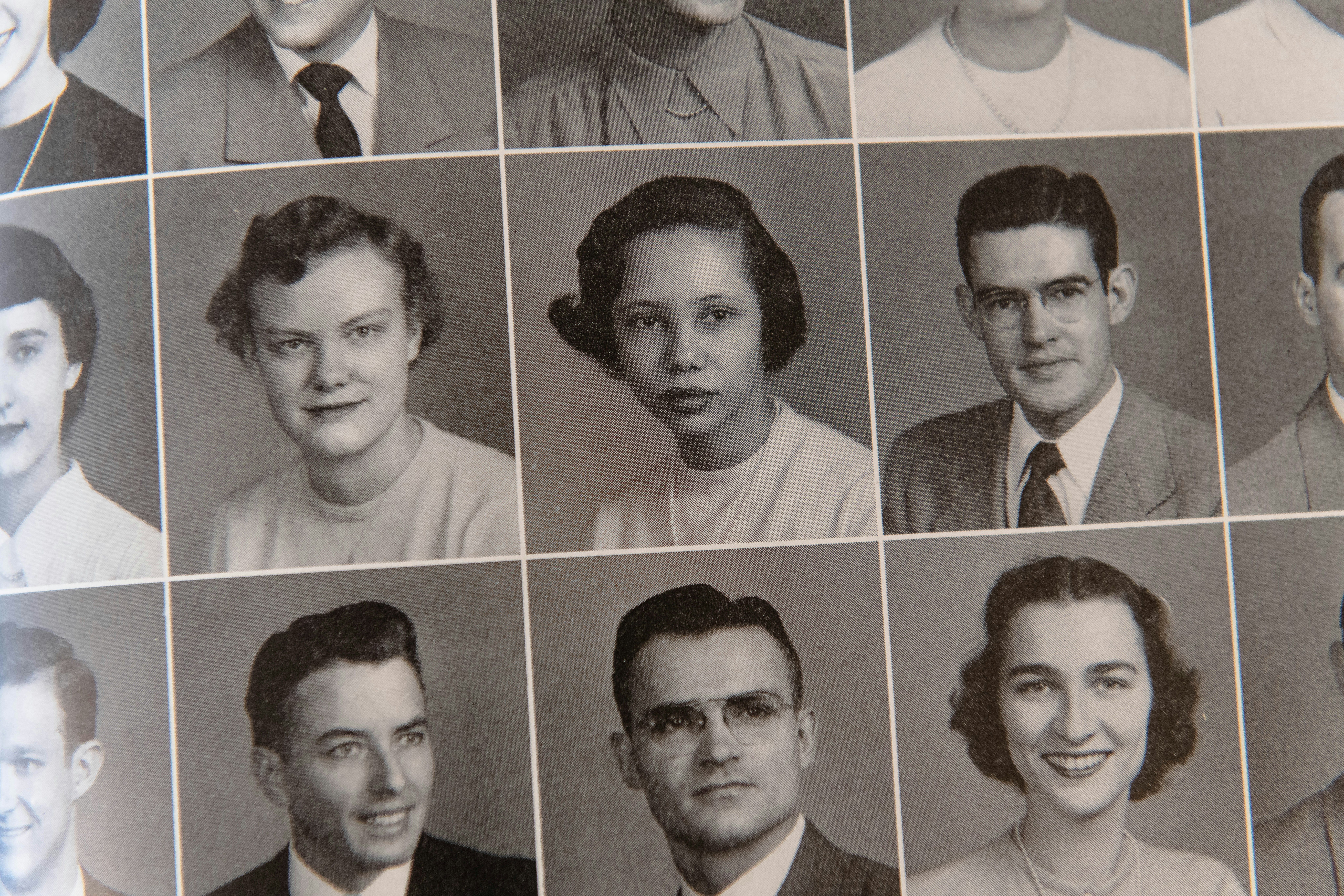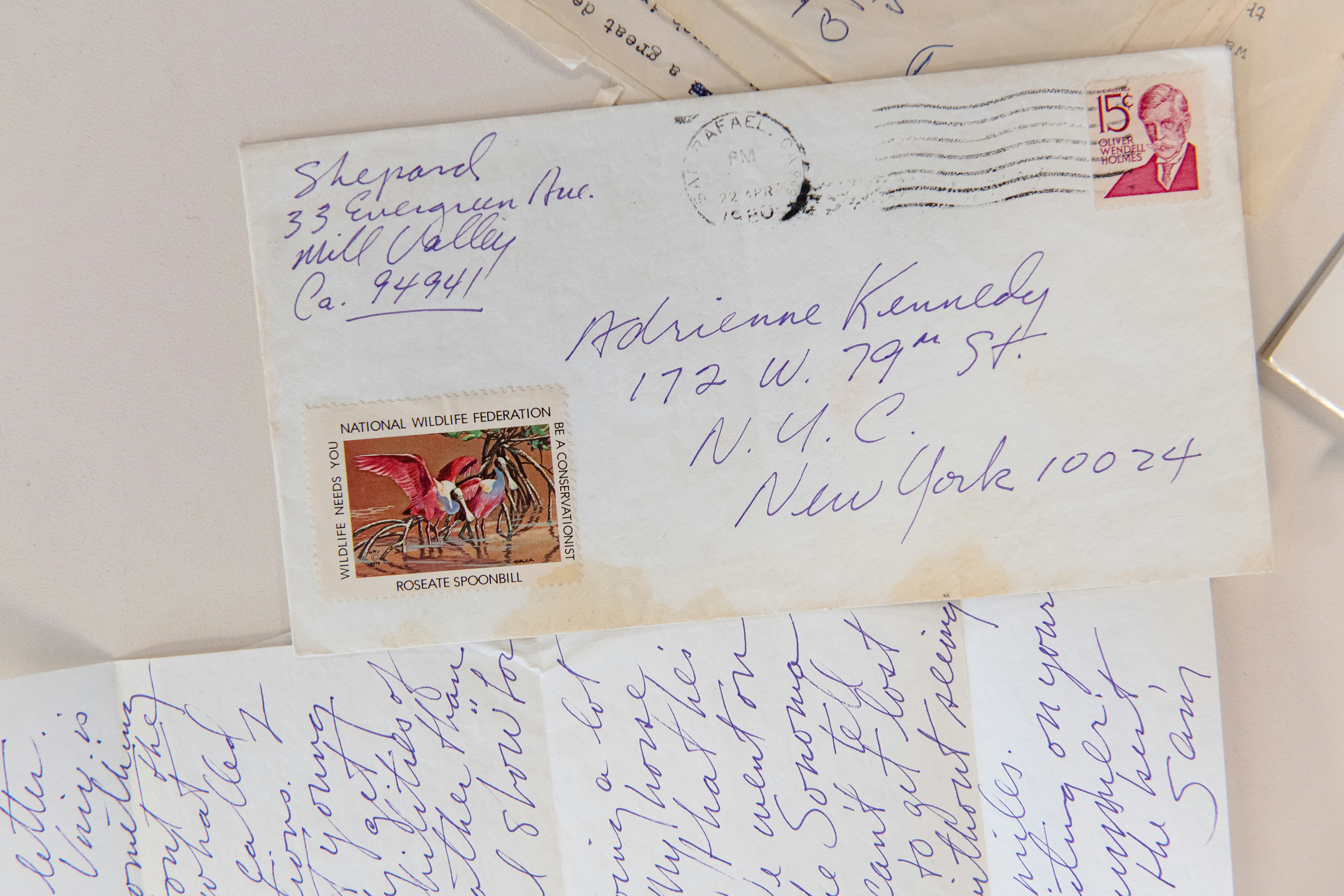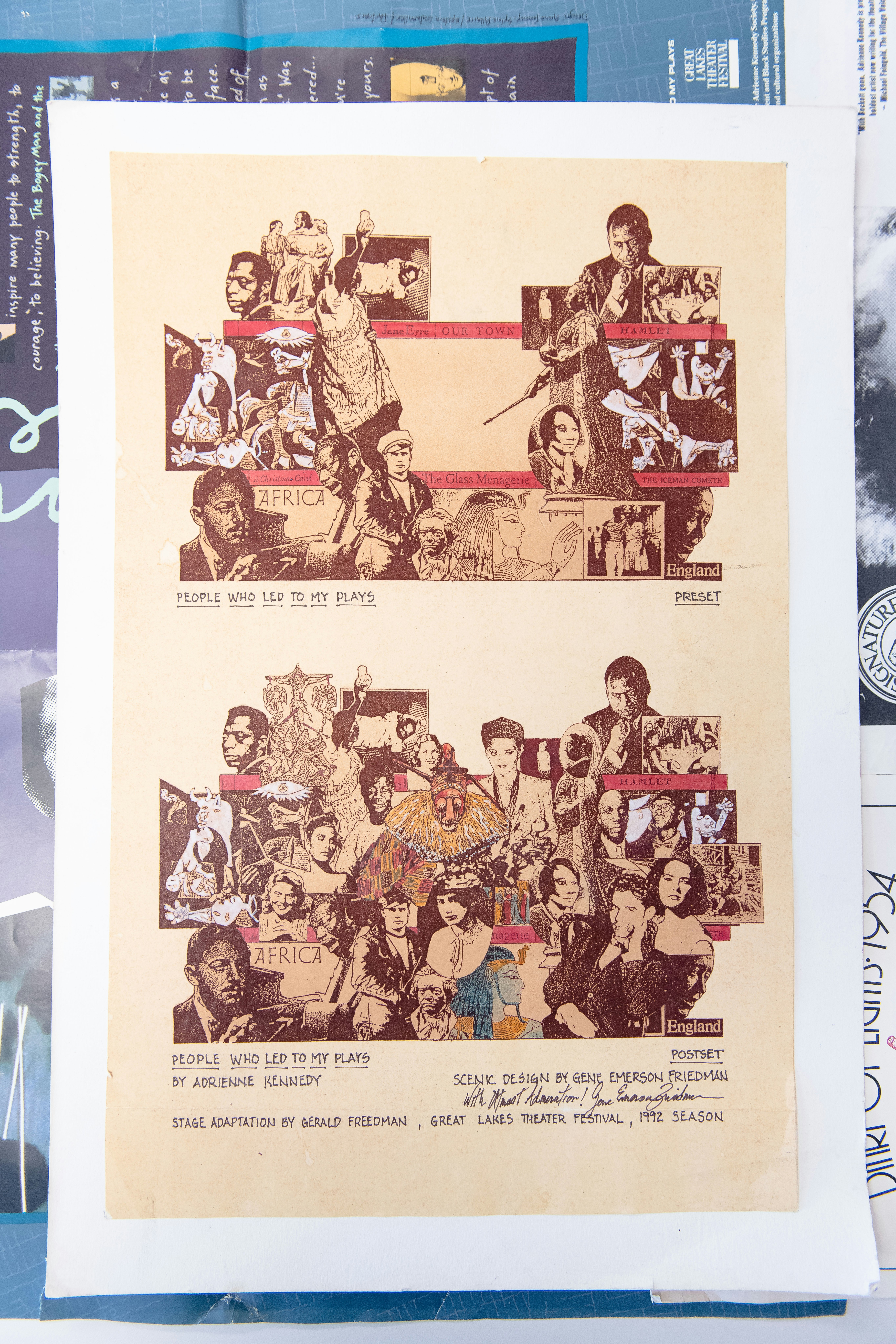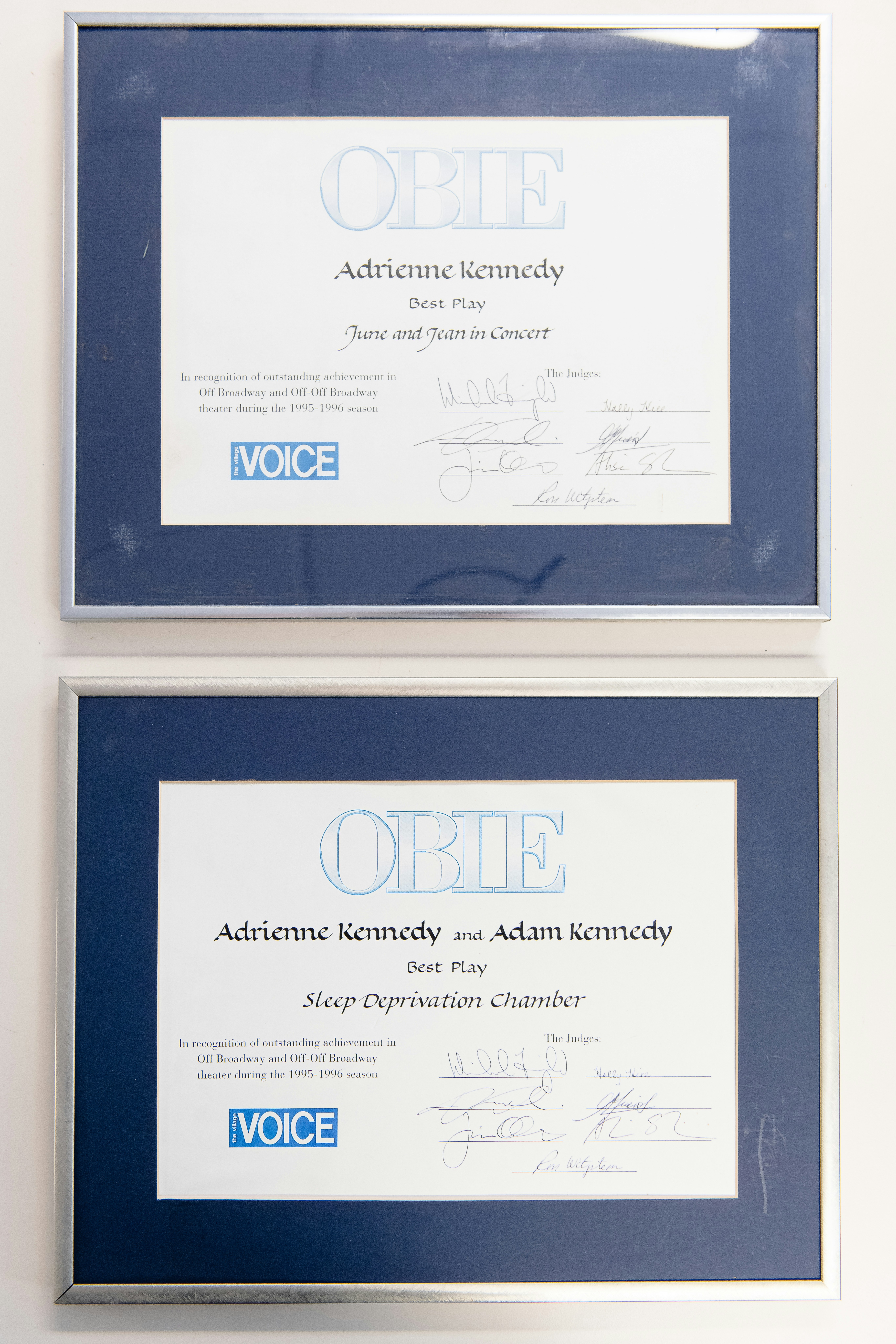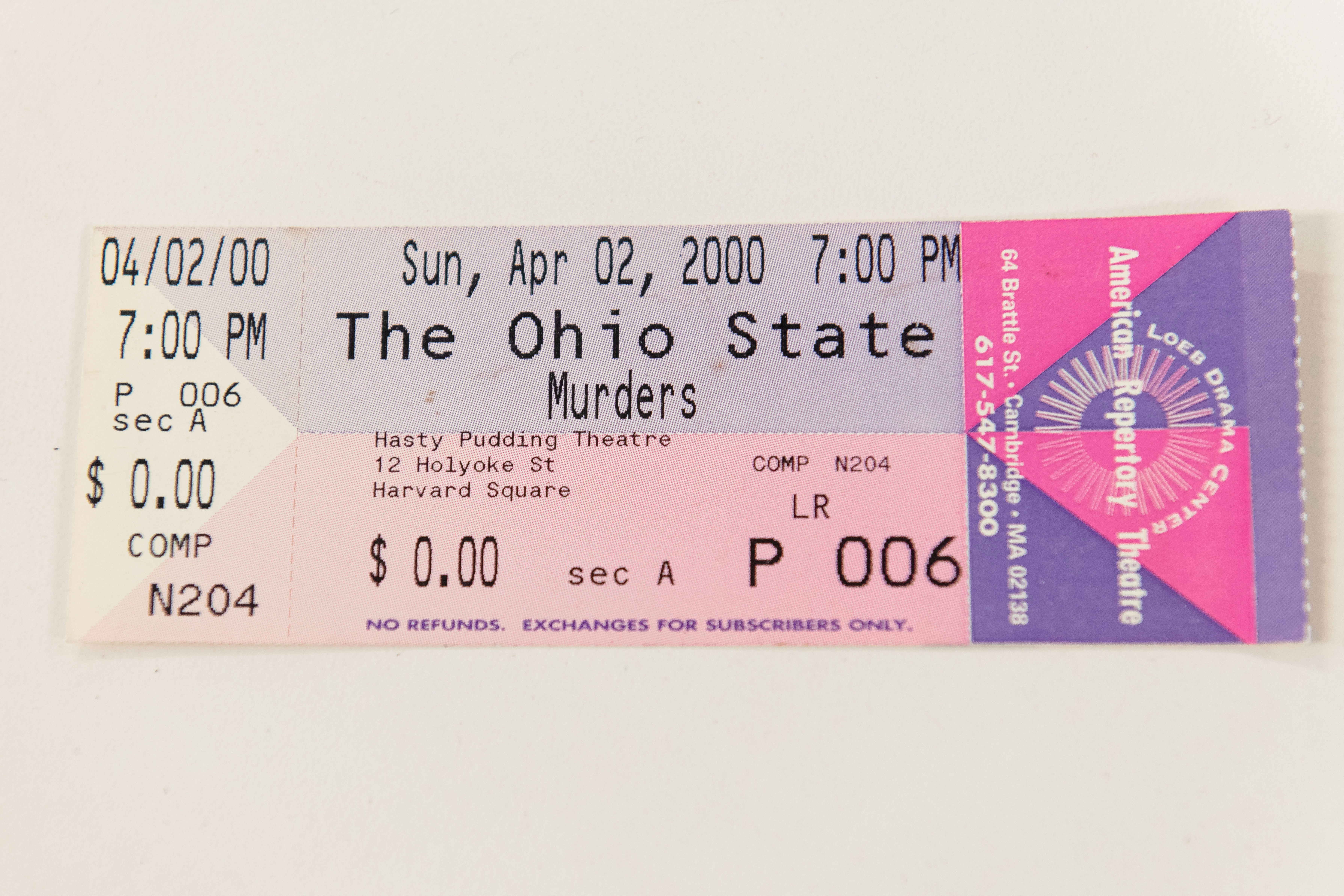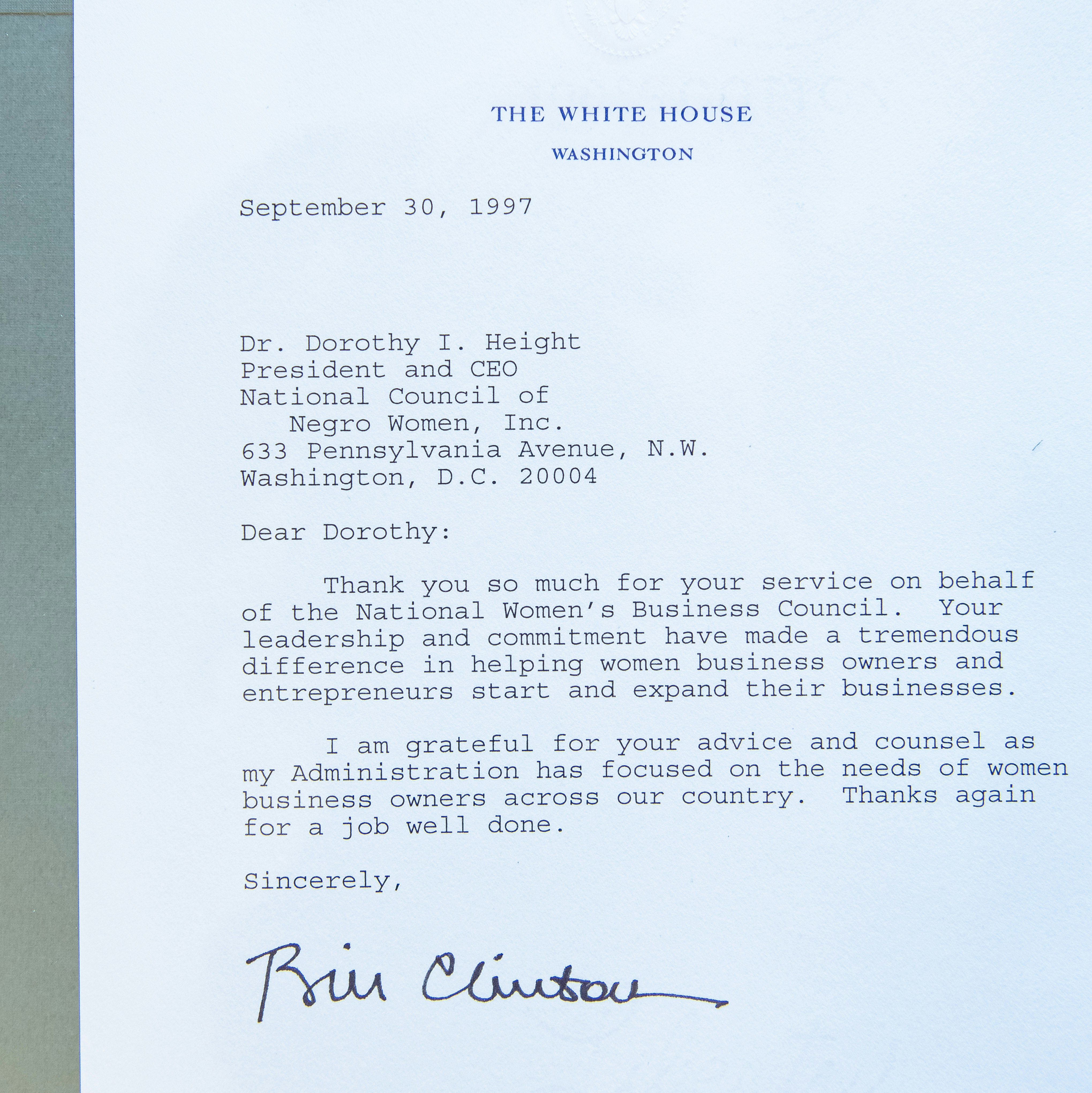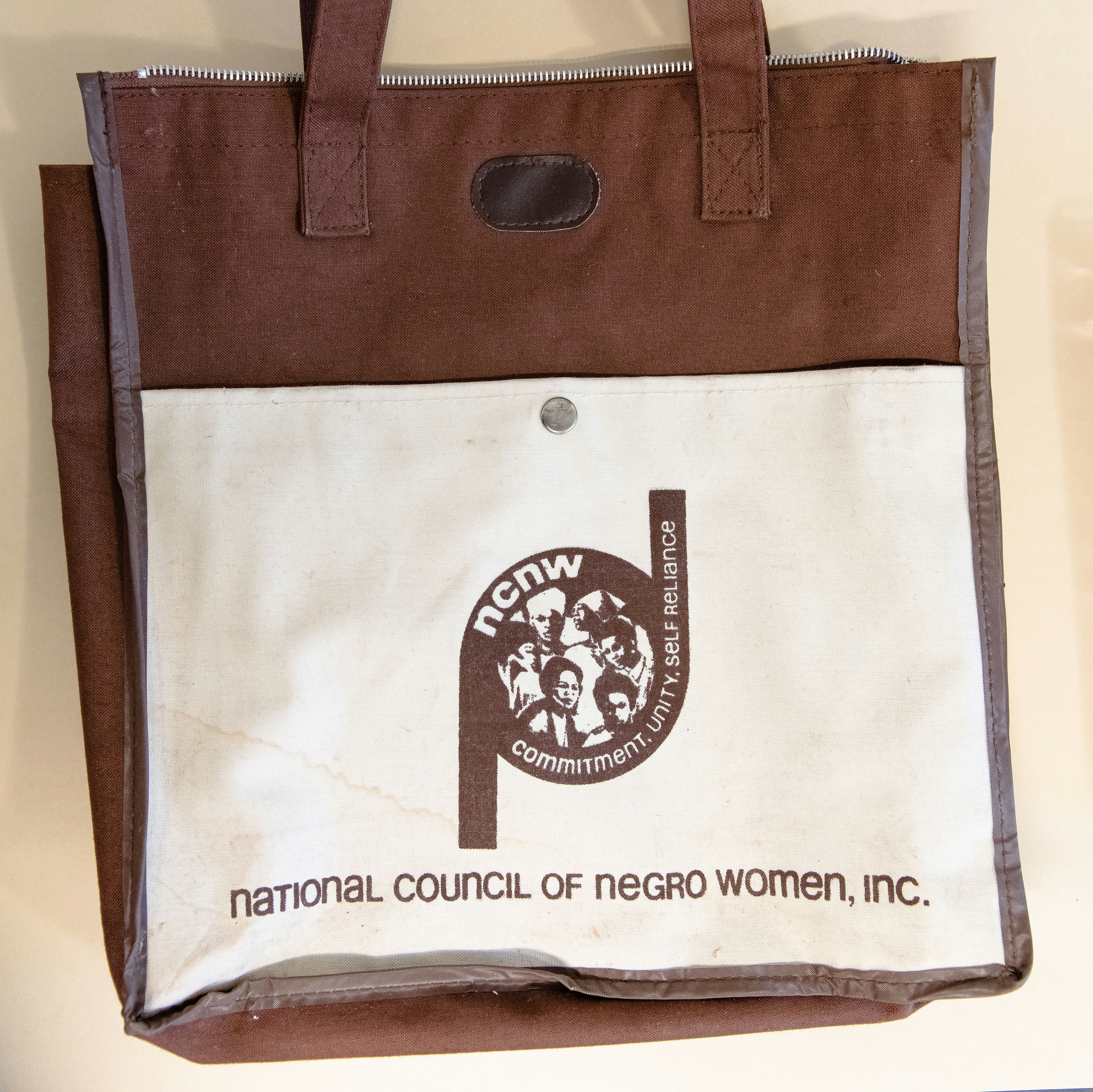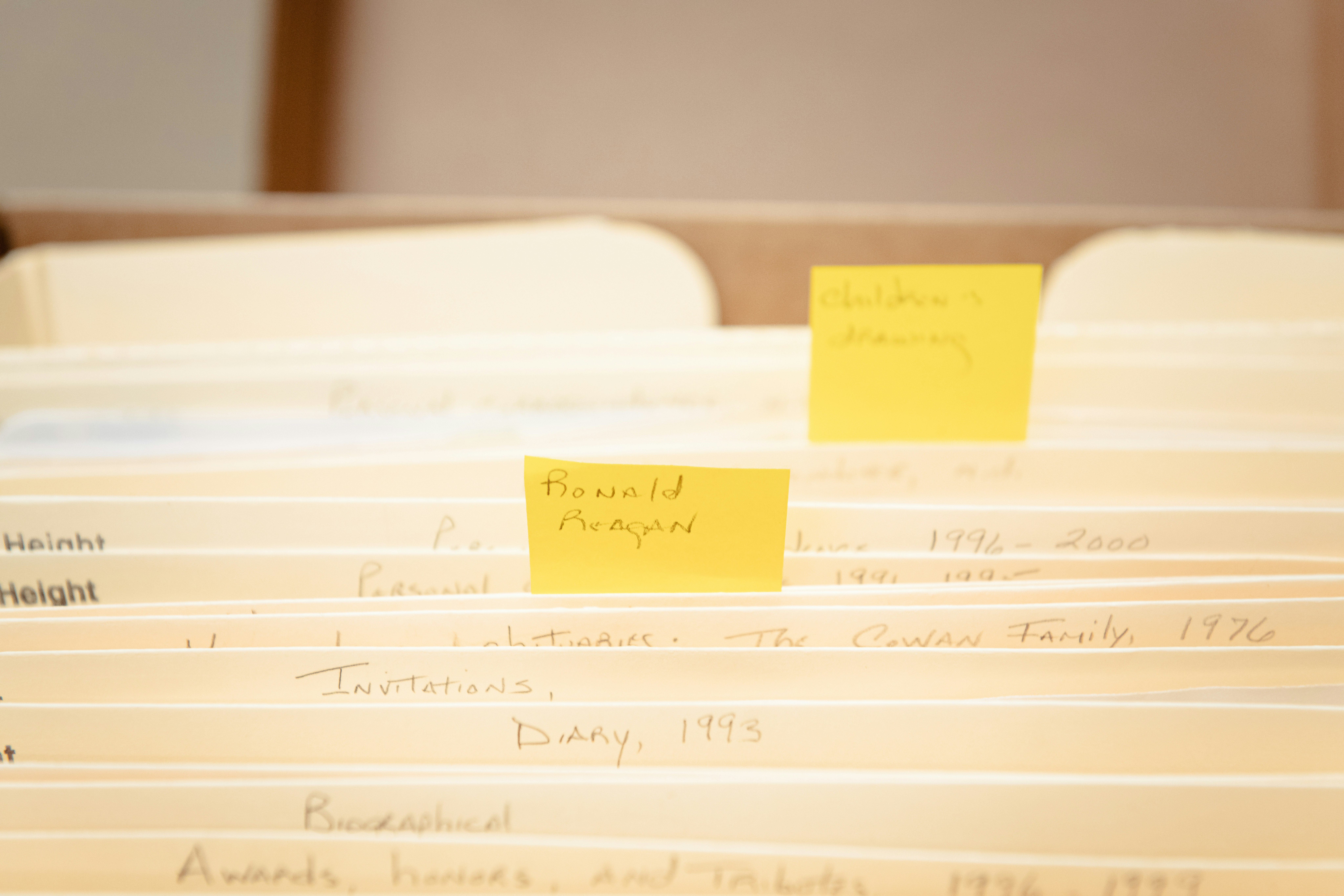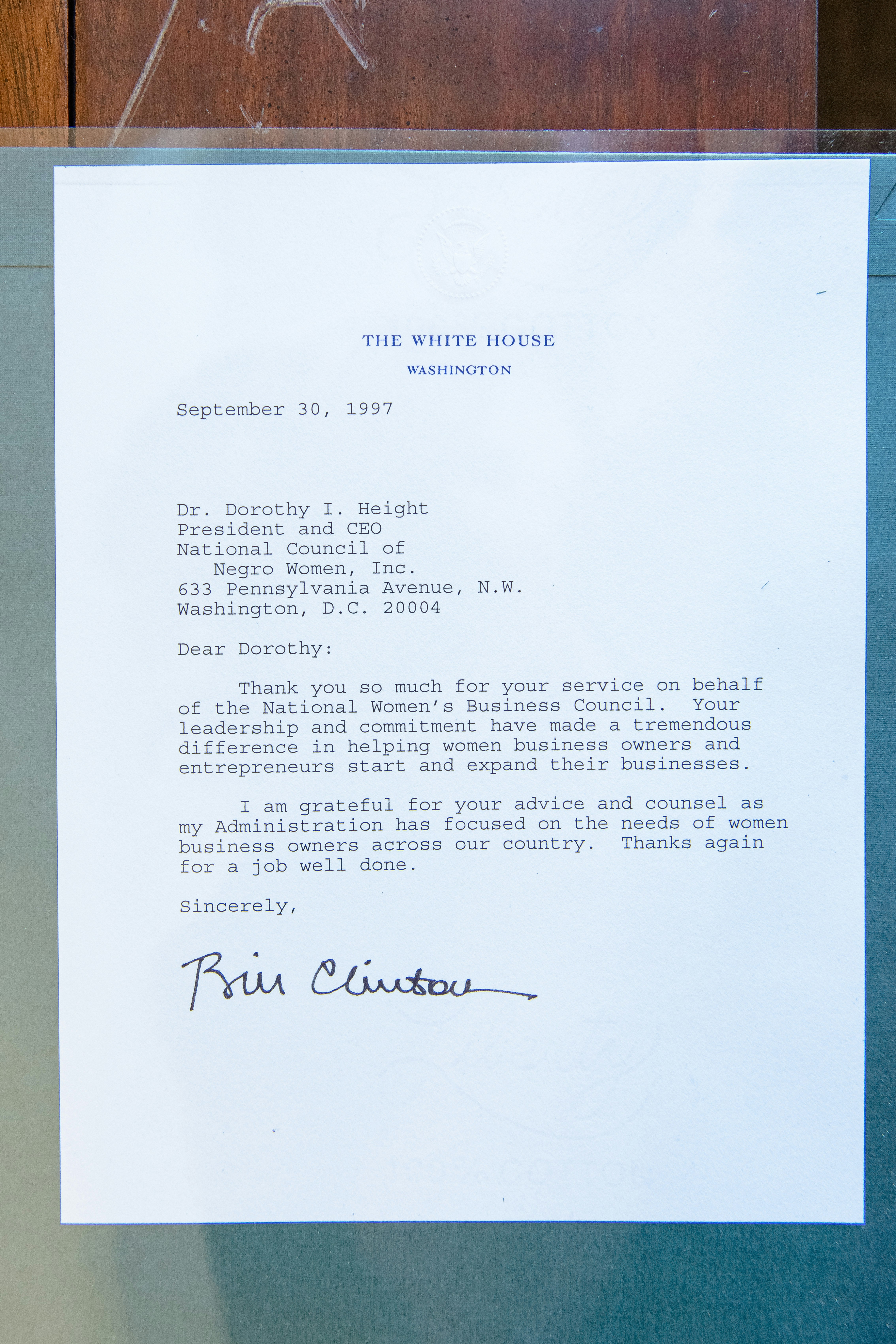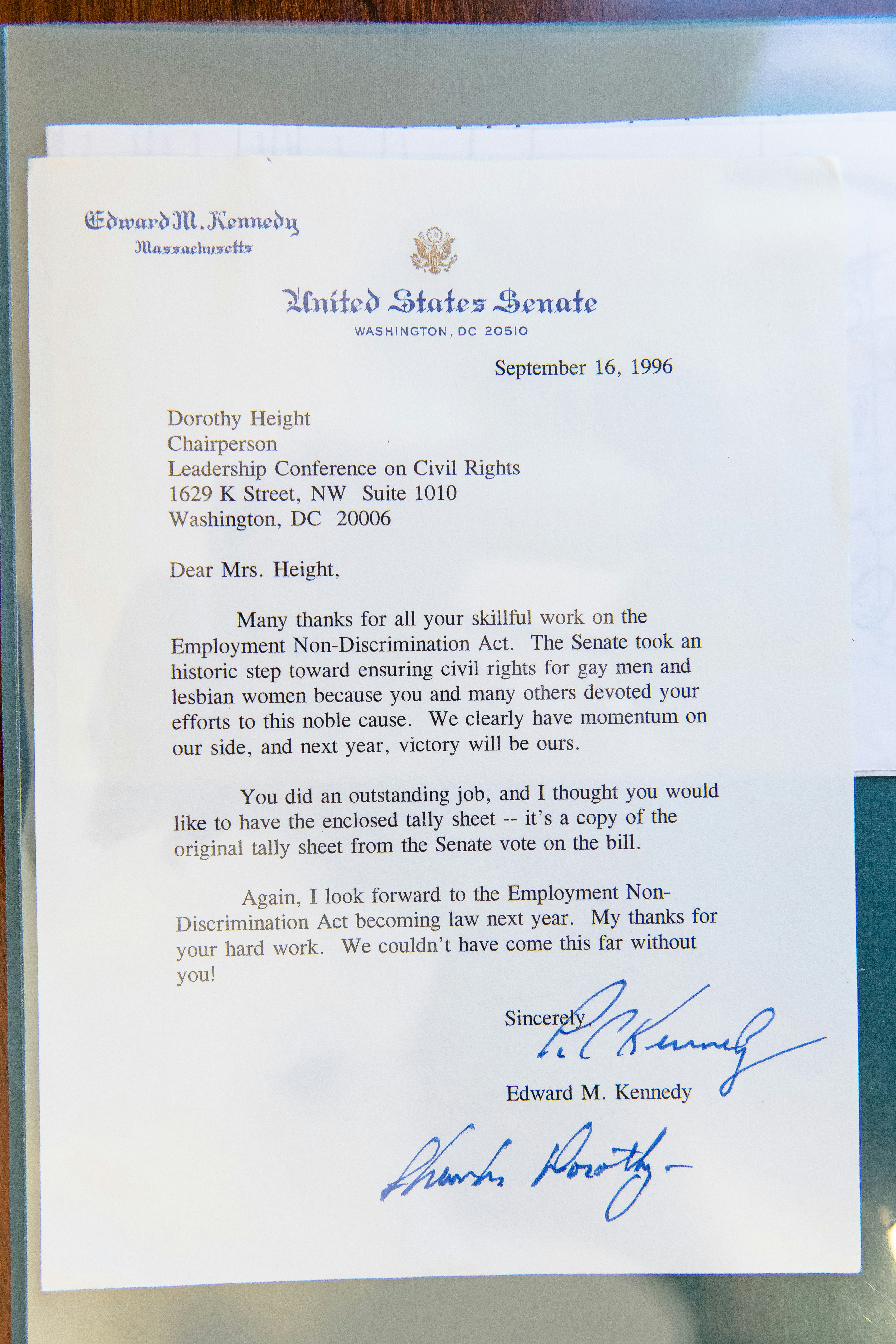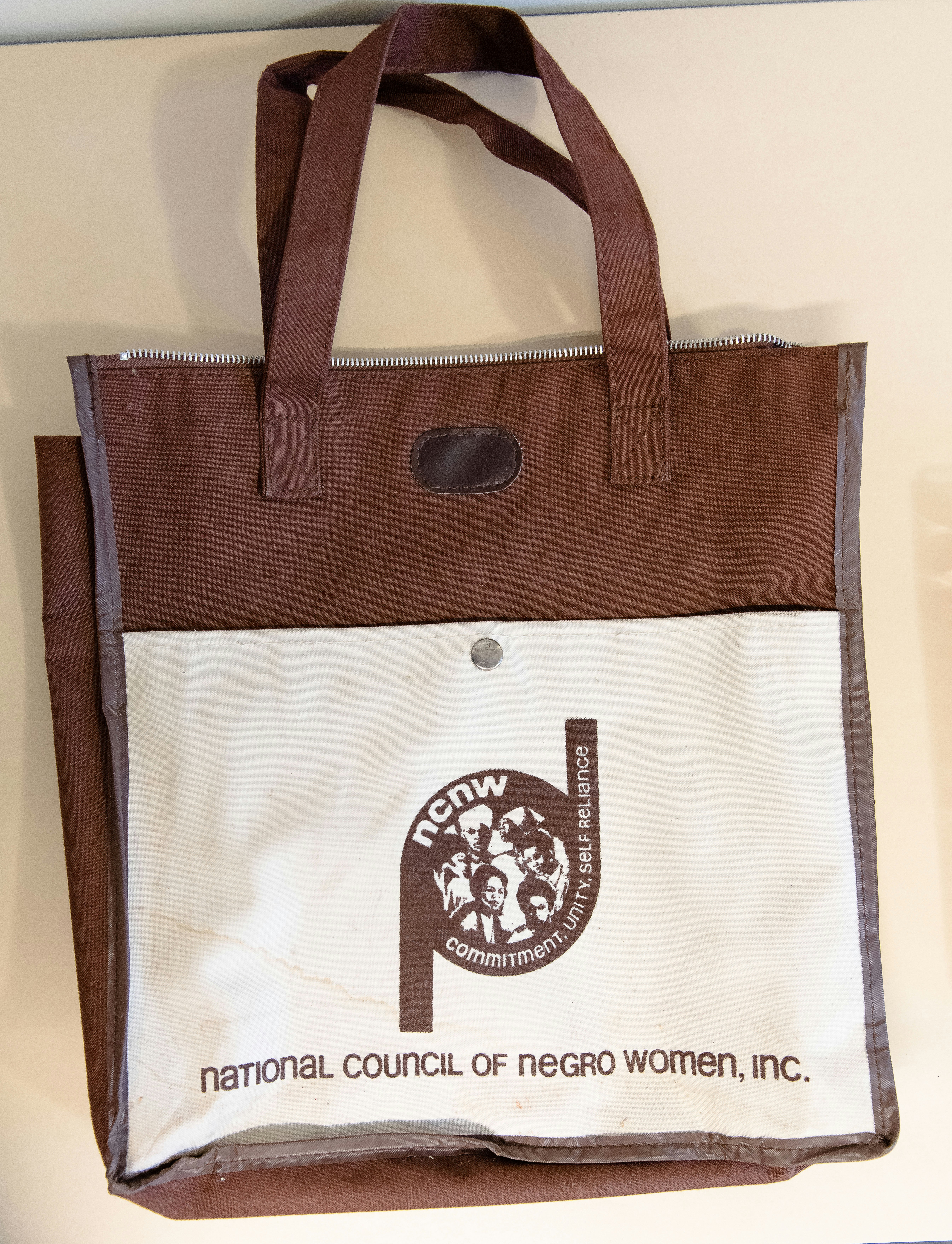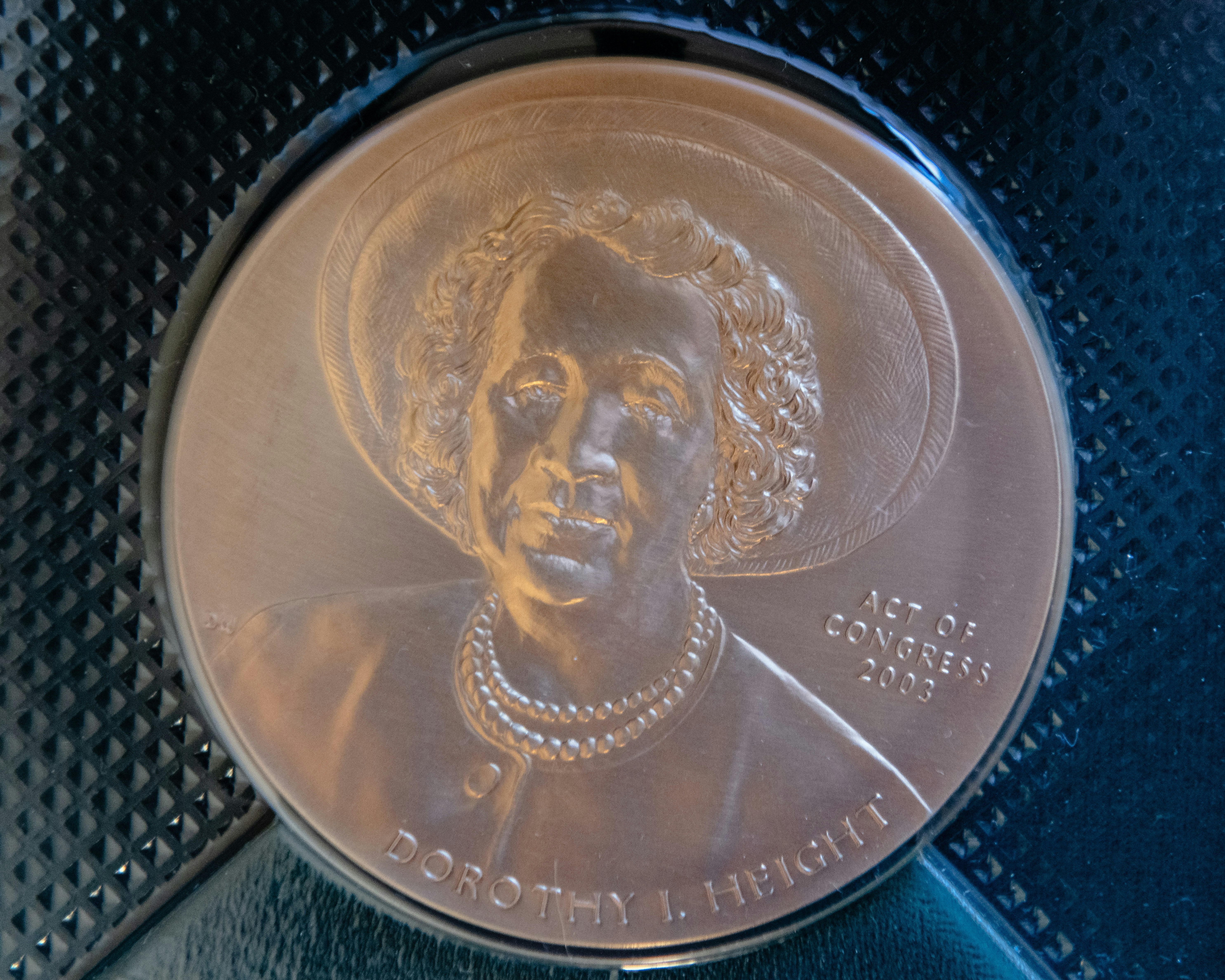In Process: Adrienne Kennedy Papers and Dorothy I. Height Papers
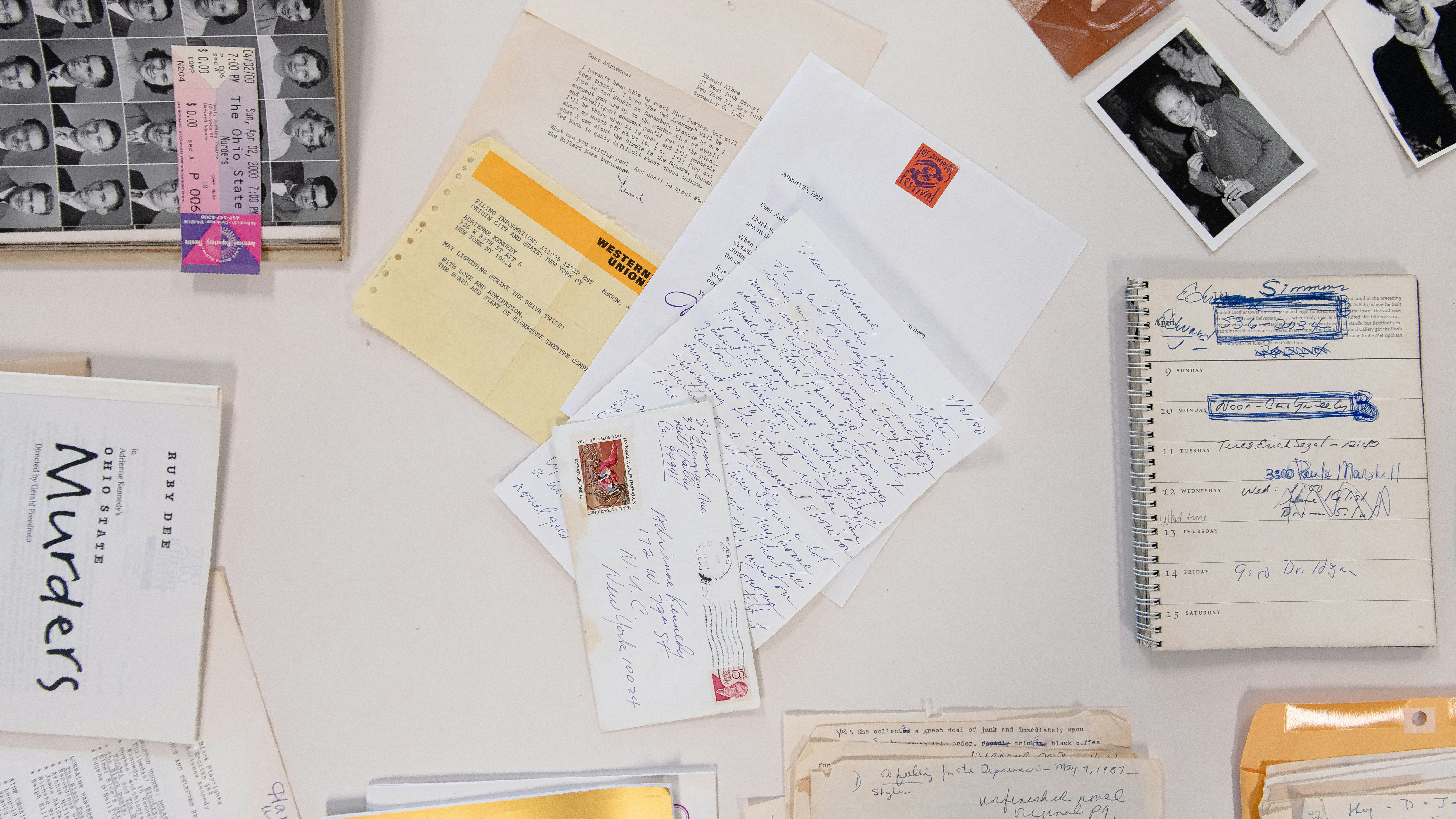
A sneak peek at two new collections—one from an acclaimed playwright, the other from a civil rights activist—currently being prepared for research.
If Adrienne Kennedy had walked on to the third floor of the Schlesinger Library on a recent Friday, the 90-year-old playwright may have described it, like many of her plays, as surreal.
The collected papers of the famed African American bard from Cleveland are now at the Schlesinger, where they were acquired in partnership with Harvard University’s Hutchins Center for African & African American Research in November 2021. And here they are, a smattering, laid out on a broad table, a remarkable American life in paper form being readied for a future of study and research into Kennedy’s amazing work and life.
Here is a sky blue, locked diary of a young Kennedy; a 1980 handwritten letter postmarked Mill Valley, California, from her fellow playwright and friend Sam Shepherd; her senior yearbook; a colorful ticket stub saved to her play The Ohio State Murders; programs from other plays performed by the Great Lakes Theater Festival; a framed OBIE award from the long-gone Village Voice.
“Adrienne Kennedy will be recalled as the prophet of a brilliantly crafted lyrical post-modernism on the American stage,” said Henry Louis Gates Jr., the Alphonse Fletcher University Professor and director of the Hutchins Center at Harvard University, which was instrumental in acquiring the collection. “In play after play that resonates still, she delved deeply into the African American experience and found there the human condition. Adrienne Kennedy is a national treasure, and it is a signal honor for Harvard that Radcliffe’s Schlesinger Library is the home of her papers.”
Right now, the Kennedy papers are not being “processed” at the Schlesinger. In expert parlance, they are being “accessioned.”
Accessioning “is our initial work with collections, where we gain basic physical and intellectual control of the material,” said Jenny Gotwals, curator for gender and society at the Library. Library staff members re-box the collection, measure, and create a basic description of what is included, with more detailed processing to follow. As a result, it will be some time before Kennedy’s papers are open to research.
“It’s important for us to highlight the different steps in the long process of caring for collections and making them open to research so donors and users understand the care we take with collections,” said Gotwals.
Kelcy Shepherd, head of manuscripts for the Schlesinger, said the library acquisition process was slowed but not entirely halted by COVID.
“We did continue to acquire and accession collections during COVID, but we were not processing physical collections because we were only on-site part time, she said.
Every new acquisition is accessioned as soon as possible when it comes in, said Shepherd. This involves making sure that the Library got what it expected, documenting the receipt of the materials, assessing any preservation needs, and creating (at a minimum) a catalog record for the materials so that researchers can discover Kennedy’s papers are at the Schlesinger.
Gotwals, who went to Virginia to pick up the Kennedy collection in November 2021, takes the initial peek and begins the preliminary record-keeping process for the library.
“My job as curator is to identify collections of potential interest, appraise material, assess research value, communicate with donors, negotiate terms of acquisitions, etc. I do have to work with the collections when they come in, so I can identify what archivists will need to know—in many cases, I am unpacking boxes to do that initial communication and explanation work.”
Schlesinger archivists describe the contents and context of the materials in a collection, but they don’t describe each item in detail. Instead, they give an overview that allows a researcher to come in and do more detailed work.
Blue gloves are worn to handle old photos, one of which shows Kennedy from her time teaching at Harvard, crossing a bridge, looking serious. Gotwals, however, handles paper with bare hands. And when the archivists asked a visiting reporter to use a pencil instead of a pen, they weren’t being stingy—a dropped pen can cause more damage to precious papers than a wayward pencil.
Down Concord Avenue, the archivist Emilyn Brown works in an annex of the Library to process the personal and professional papers and mementos of Dorothy I. Height, a major architect of the 1963 March on Washington, close confidant of Martin Luther King Jr., and world-renowned civil rights and women’s rights activist.
Height’s collection was accessioned just before the pandemic in December 2019. Thanks in part to delays from COVID, the second step in bringing her work to researchers—called processing— is only now underway.
In processing, an archivist takes accessioned papers out of store-bought manila folders, dusty binders, envelopes, picture frames, and boxes and places them in acid-neutral folders to foster preservation. The archivist then re-boxes, labels, categorizes, and places the materials in some logical order, allowing researchers to find what they are looking for.
Here will go a 1997 letter from President Bill Clinton thanking Height for her work on the National Women’s Business Council. “I am grateful for your advice and counsel,” he wrote.
And Senator Edward M. Kennedy sent thanks for her work on the Employment Non-Discrimination Act. “The Senate took a historic step towards ensuring civil rights for gay men and lesbian women because you and many others devoted your efforts to this noble cause,” he wrote, writing out Height’s full name next to his signature.
The result of archival processing will be not only a collection that is organized and safely housed in archival quality boxes and folders but also a written research tool called a finding aid.
“The archivist is creating a pathfinder for researchers,” said Shepherd, “providing context about the creator of the records; letting them know what topics, activities, and events are documented and in what formats; highlighting significant contents; and essentially giving researchers a map for navigating all of it.”
After all this work, the Height collection is expected to be ready for research by the end of this summer.
